A very long day
Yesterday I wrote for the first time in a while, about how maintenance isn’t really what you might think. To be honest, I was motivated by weeks of built up reactions to hearing many times in different ways, from friends and family alike, how relieved they were that Wes was done with treatment. We all wish it were so, but it isn’t, not even close, as yesterday ended up testifying terribly.
I fall asleep on the couch with Wes Tuesday night, trying to keep him up late so he could eat as much as possible before the cut-off from solid foods at midnight. We both crash around 10:30. He’s been eating OK lately – not much variety, and still suffering from severe constipation, but not starving. He tends to eat small meals throughout the day – rice or noodles, lots of butter. An apple or orange or grapes here and there. Dried mango, dried blueberries. Chocolate now and then. Fries often.
Wednesday he has a lumbar puncture scheduled for the afternoon, which means no food all day. The procedure was scheduled later than usual – and after two hours of physical therapy and occupational therapy – so we expect a shitshow-trifecta of low blood sugar, hospital anxiety, and just being a 3 year old.
Stephanie and I wake up around 5am. I make coffee and walk Archie, and she busts out a beautiful omelette which I’m too nervous to finish. We get everything ready to go for both kids – stroller, toys, change of clothes, iPad, chargers, and a variety of post-sedation snacks.
We let Wes sleep as late as possible. He finally starts to stir around a quarter to seven. I run upstairs and have a really pleasant wake-up, full of giggles and kisses. He drinks a little water, and we go downstairs. We let him watch something mindless on the iPad to keep him distracted while we get the car loaded. With both kids dressed, we hustle him into the car. Early morning departures are often rough – there aren’t many good reasons for us to leave the house like this, so he starts to get upset as soon as he does the math – no breakfast + leaving at 7am + clean clothes and socks = trouble. We tell him he’s going to play with Miss Michelle, his occupational therapist, which is only a minor lie of omission. I promise a present later – not a lie as he won’t forget. He settles down a little. We had already agreed to give him ativan today – it’ll help get him through the boatload of anxiety, and especially the stress from being denied food. Fasting isn’t a normal part of his therapy days, and it can only really mean That he’s headed for a procedure – so we give him his tiny little dose and pull out of the driveway.
The drive is about an hour, but uneventful. We talk a little politics, listen to a podcast. When we get to CHOP KoP he is relaxed and excited to go play with the toys he’s been looking forward to all morning, but he gets upset when we check in with oncology on the second floor prior to heading upstairs to therapy. He knows the difference, but we deflect and then quickly go up to the third floor. As we wait for his 9 o’clock appointment we play foosball to kill some time, and then we finally head into the play zone.
Therapy is held in a large open space, full of exercise machines, tumbling mats, scooters, games, and toys, so it’s a little bit of heaven for a three year old.
Occupational therapy comes first today, and he spends an hour doing a variety of tasks that are equal parts fun, challenging, and requiring some discipline. He loves it all. It’s an opportunity for us, as a family, to work on certain skills and behaviors that may not be getting enough attention during treatment, so lately he’s been working on brushing his teeth, which he’s recently turned a corner with. Today we asked to work on drinking juice. He normally doesn’t drink anything but milk or water, but it’d be great for him to try other things, and really helpful in days like these when clear liquids are all he’s allowed. This task doesn’t get very far though – he doesn’t actually sip any juice today, but there is some progress… he sniffed it. Baby steps.
The therapist suggests we might explore whether Wes is a candidate for the “feeding center” – a special team at CHOP that brings together multiple specialists, including physicians, psychiatrists, and nutritionists, to tackle eating challenges in a holistic way. I make a call, answer some questions, and am told we’ll get a follow up call in a week or so from a financial advisor. This is a welcome interlude, and one of many reasons we love CHOP – they want to review our insurance policies in detail and make sure there are no expensive surprises for us if we do go down this route.
Eventually, his OT hour is up, and physical therapy begins, which is even greater fun.
PT entails more physical activity, and a focus on the conditioning of his body. He’s developed issues with his gait – he walks awkwardly, and it gets worse with fatigue, and he’s also shown signs of toe-walking. All are common side-effects of vincristine that have to be addressed. As the symptoms have developed it’s become more and more likely he’ll need some kind of corrective assistance for his walking, so PT has decided to start with orthotics – braces for his lower legs that help to stabilize and correct his walking posture. He wasn’t thrilled about it the first time they tried testing the inserts on him, so this week we brought new shoes and thought we’d try again.
The orthotics aren’t well received, again. Wes gets extremely upset at the modifications to his shoes, and at the idea of strapping the braces on his legs. After a protracted battle we all retreat and decide to try again another day. He calms down, and we wrap up PT while things are still chill, but as we get ready to leave he has another meltdown – he doesn’t want to leave, he just wants to play, which is both an honest reaction and a stalling maneuver as he knows what’s next.
We head for the second floor again, and he’s in full nuclear mode; I hold him close, and when we head into the department to get his vitals Stephanie gets him calmed down. We check his weight and height, which are both up (small, but important, victories), and then head to a private room. He begs to go home, and we try to soothe him. Eventually one of his regular nurses comes in, and we prepare to access his port.
Access doesn’t go well – the nurse does fine, but he’s already a mess, and it just gets worse. Stephanie does an amazing job restraining him, the port is accessed, and they draw blood for a CBC and hook him up to fluids to try to help rejuvenate him. It’s been a long day without calories already.
The team comes back with his CBC results and his numbers are great – ANC is a little too high, which they promise to address later. High neutrophils isn’t normally a bad thing – it represents a strong immune system, which means fewer infections, fewer ER trips, less risk of contracting something he can’t shake – but it can work against his treatment, which is why one of his daily drugs is an immunosuppressant, and the dose will probably need to be increased soon to bring the ANC back down a bit.
We head out to the common area – the day clinic where we often spend downtime – and wait for the team to be ready for his LP. It’s scheduled later than usual so we expect a long wait, and make the best of it. Wes alternates between exhaustion and whimpering to go home – his port has been accessed so he knows we’re not done.
The team comes out around 11:30 and says they are going to get him started much earlier than planned, so we relocate again into a sedation room – a more comfortable space with privacy, a patient bed, and sofa. Of course, Wes knows exactly what happens in here.
Stephanie and Wes sit down in a rocking chair with him bundled up in a ring sling, sniffling and occasionally demanding to go home in between bouts of exhaustion and YouTube-induced-comas. We meet with the anesthesiologist and she and Stephanie agree to administer part of the sedation right where she sits with him. Snuggled up with mom, he’s as relaxed as he’s going to get and the line coming from his port was readily accessible, so it was easy to start the process of knocking him out without him even having to move from his cocoon.
The drugs kick in quickly, and by the time Stephanie gets him out of the sling he’s rapidly slipping into unconsciousness. She lays him gently on the bed and they continue the sedation and prep him for the LP.
One person raises his shirt, examines his back, and disinfects an area around his spine, while another curls him into position. The nurse practitioner deftly performs the procedure, something she’s done a thousand times. It still makes me sick to watch. I can’t look away.
While the assisting nurse holds him in a fetal position to prevent movement, the NP administers a local anesthetic to numb the area. A big needle is inserted between his vertebrae and into the central canal of the spinal cord – the needle doesn’t have a syringe or collector attached, so spinal fluid begins to drip out like a syrup tap in a maple tree. A sample of the clear, watery fluid is collected in a vial to be sent for analysis, looking for any signs of cancer cells lurking in his central nervous system. Finally, a loaded syringe is connected to the already placed needle, and a dose of the harsh chemo methotrexate is injected directly into the spinal cord, to help ensure no leukemia cells are birthed there in the future. The whole procedure is done in a few minutes. Once the needle is remove he needs just a band-aid to cover the site.
As he lays there unconscious they also administer a dose of vincristine through his port, the same drug that’s caused him so many difficult side effects. It’s hard knowing he’s getting even more of the same poison that has taken his agility, hurt his intestinal tract, causes him to slur, but we always remember all of that is far better than death.
He sleeps heavily. We grab some food from the nourishment room, donated by some anonymous person, likely someone themselves touched by pediatric cancer. Stephanie tries to nap but I don’t think she gets much sleep. I try to be productive and fail miserably. My brain is shot, no use in fighting it, so I drink too much coffee and wait.
Our NP drops by and tells me she made a referral for a GI specialist to see if we can finally tackle this awful constipation, and I tell her we just made contact with the feeding center. This is probably redundant, maybe even the exact same team, so it’s good we compared notes.
After two hours or so a nurse comes in and turns the lights on – they don’t want him to sleep too long, so at this point the idea is to start pushing him to wake gradually. The lights are very bright, though.
Within just a few minutes under the house lights he’s tossing and turning so we know sedation is wearing off. We start talking to him, to ease him back into consciousness. Some kids wake up from sedation in a demonic state. Thankfully Wes is almost always pleasant coming-to, but we always want him to know we’re near so he’s not alone in the silence before he can really open his eyes. Twenty or thirty minutes after his initial movements he’s finally ready to wake up. Groggy as hell, he wants a hug but feels OK. We get him water, and start encouraging him to eat.
Unusually, he’s not too keen on eating. He says “no” to cheddar bunnies, but then asks for pretzels. He holds them in his hands, but won’t take a bite. A few sips of water, lips so parched they are sticking to the straw. He wants to be held, and we each oblige in turn. He sits with mom, waking up, snacking – nibbles of dried mango, a few chocolate peanut butter cups, more water.
Eventually he’s awake and alert, still high as a kite but looking good. We get the word that we can go home. They deaccess his port, and we don’t waste much time grabbing our shit, tossing the kids into the stroller, heading for the door. We pass through the clinic to say our goodbyes, double check an appointment, review the post-procedure details. We get a free hat and more pretzels and goldfish for the road.
Downstairs we exit the building under violent storm clouds. It’s still dry when walk out, but we feel the first big rain drops before we even get to the car. We quickly load up. It’s 3pm or so, and we’re finally heading home, but not before Wes gets some some road food – I find the nearest McDonalds on the route home and score him some hot, greasy, french fried calories for the hour long trip home. He’s happy. Babbling. Before we leave McDonalds the sky has cracked open and dropped an incredible torrent everywhere. Streets are flooding within minutes, visibility sucks, but we’re going home. We hit the turnpike.
Wes is asleep not even halfway through his fries. We let him rest, put on a podcast. Stephanie drives. I sneak a few sips of her iced coffee.
Halfway home Stephanie checks on Wes, and her expert eyes immediately spot that he’s red. He doesn’t feel hot to the touch to me, but I’m terrible at that, and then we realize we don’t have a thermometer in the car today. We focus, knowing what’s going on – we need to check his temperature quickly, and then start figuring out next steps. As we look for a pharmacy we call the oncology team: Wes is looking feverish, and puffy. We’ve seen it before, it’s that awful methotrexate I’m sure. The nurse tells us if we’re concerned to head for the nearest ER. We stop at a Ride-Aid and I run in and buy a thermometer and Benadryl. His first temperature comes back 101.9, troublingly high – more than high enough for an automatic ER trip. We give him Benadryl, and recheck. He’s hovering above 101. We call the nurse back, and compare notes – we decide to go to Doylestown Hospital – not the closest ER, but less than 10 miles, and in the direction of home – trying to plan ahead. The nurse calls Doylestown for us, briefs the ER.
10 minutes later I carry Wes into the ER and they are already expecting us. We are immediately ushered into a private room, and I brief them on his condition; the treatments today; his port; his history; and theory about what’s going on. He had an intrathecal methotrexate (MTX) injection today, on top of being slightly dehydrated. MTX is always rough on him, and he’s had this exact reaction before, landing him in the ER at least once. Stephanie walks in seconds later and fills in even more detail. The main concern with a fever is that it could be an infection, but his temperature has already dropped substantially after the Benadryl, his ANC is high today – there’s no sign of infection and every reason to think it’s another shitty reaction to MTX. Still, they have to rule out infection.
We know the drill. Our oncology nurse made sure we would tell them what to do, but we already know – not our first rodeo, a fever has landed him in the ER probably a dozen times since October. They need to take blood for a CBC and cultures, and administer IV antibiotics. He needs to be accessed again. It’s going to be a long, shitty night.
Wes is distraught. Not only are we back in a hospital, it’s an unfamiliar one. We’re all exhausted, at our wits end, the emotional rollercoaster hitting a new low for the day. Stephanie holds him. It’s all that can be done, and it helps immensely.
And then we wait. An hour, maybe almost two, before there’s finally a plan in motion. The IV team will come down. They’ll access his port to draw blood for a CBC and cultures – apparently it’s against common practice at this hospital to port access for cultures, but the doctor can override the rules and does – we clearly have a strong handle on his treatment protocols, what works well and doesn’t, and she listens and adapted well. They treat us like partners, which is what we are used to at CHOP, but were concerned about walking into a random ER.
The IV team arrives, and does a fantastic job on port access – quick, collaborative, and efficient. It’s never pleasant, but it can get a lot worse in the wrong hands. These are, thankfully, the right hands. Sometime after 7 he’s accessed and they take blood for a CBC, and a few minutes later bring back noodles and rice with butter. At first he’s not interested, but we stimulate his appetite with dried mango and more chocolate-peanut butter cups, which he devours and then moves on to the starches. Eating is a good sign. He’s grumpy and hungry. We feed the beast.
They promised quick results, and they weren’t wrong. Less than an hour later the labs are back – everything looks fine. Great. Cultures take longer – days, really – so there’s really no way we are waiting around for a full culture, but there’s also no reason to think they’ll show anything.
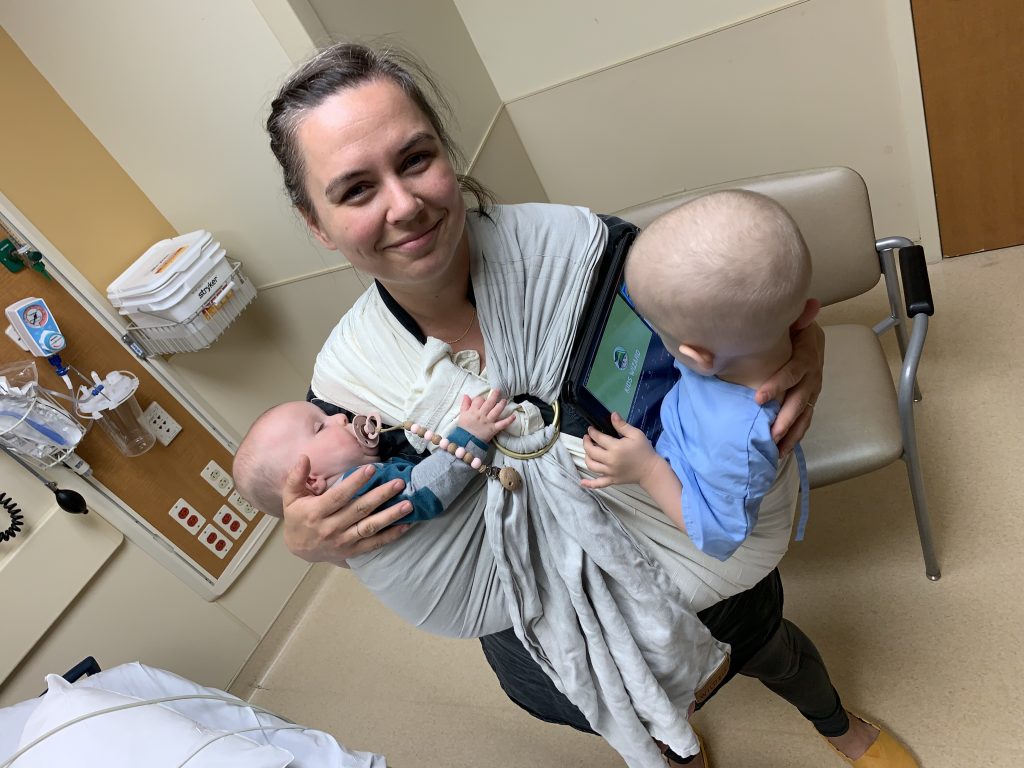
We have a frank discussion with the team. We know what’s going on with him – he had a reaction to methotrexate, not the first time. The Benadryl brought it under control, as it does. He’s fine, all things considered. Unless they have a good reason to admit him, we think they should give him the antibiotics, watch him for a bit, and then let us take him home for rest and monitoring. If he shows any symptoms at home we’ll bring him right back – or, more likely, to CHOP in Philadelphia, since that’s where he’d end up if he needed to be admitted anyway. So they administer Cefepime for 30 minutes, and let him rest for another while. His vitals are good, he’s doing fine, just tired, and sick of the hospital.
They agree: he needs to go home. Sucking him further into the system tonight won’t do him any good. We’ll administer Benadryl every 6 hours for the reaction symptoms, and monitor his temperature.
At about 10pm we’re told to go. Again, we waste little time GTFO’ing. We are only 12 miles from home but we stop again at McDonalds for another bag of fries. The boy is hungry, and happen again to see mommy’s red car.
When we finally get home he doesn’t want to go to bed. We’re all wrecked, but I tell Stephanie to go to bed with Ruth and I’ll bring Wes up in a bit, but by the time we’re done with our conversation he’s fallen asleep on the sofa, curled up with his fries. I gently scoop him up to take him to bed, and he wakes just long enough to demand the fries come with.
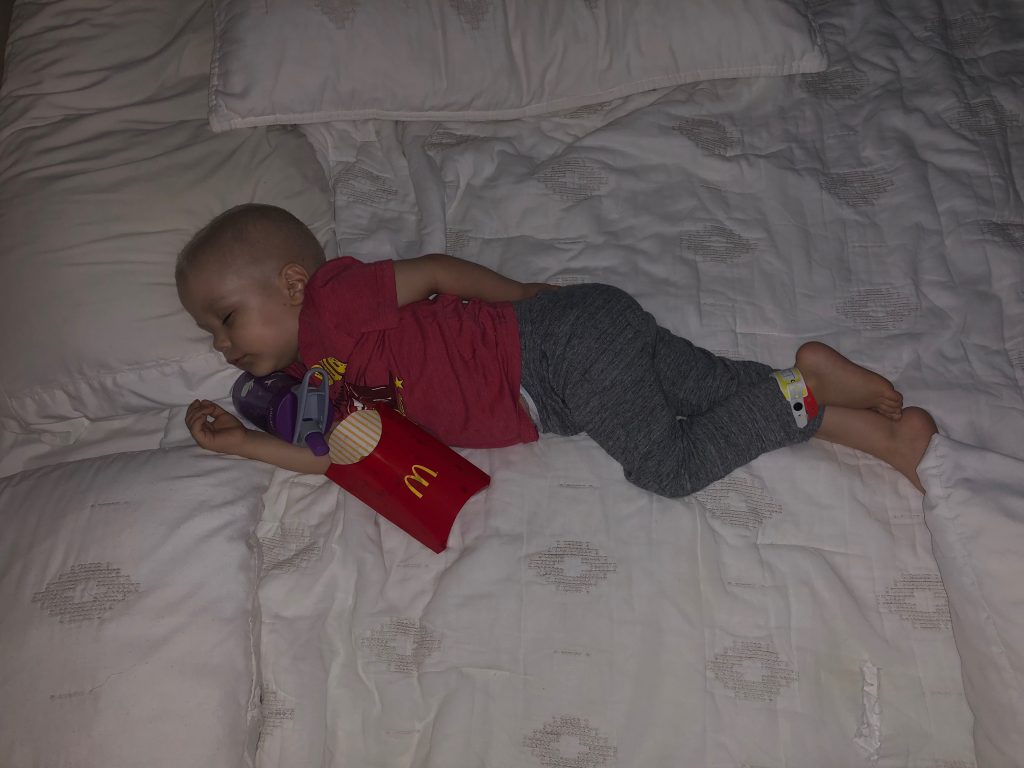
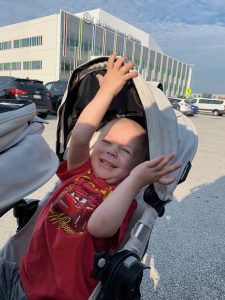
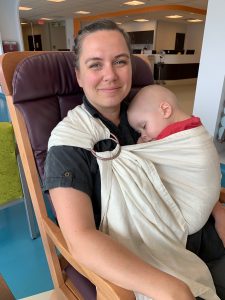
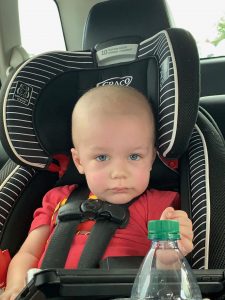
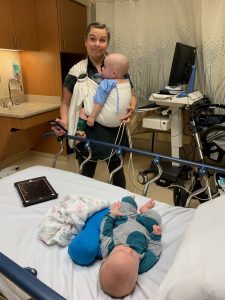
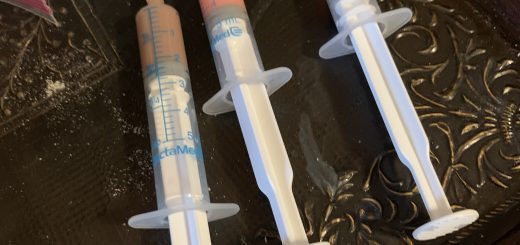
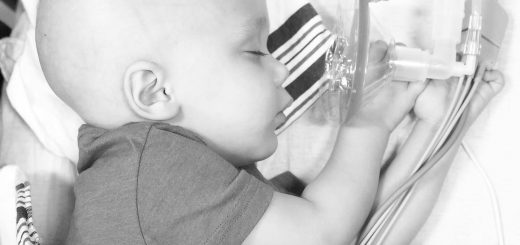
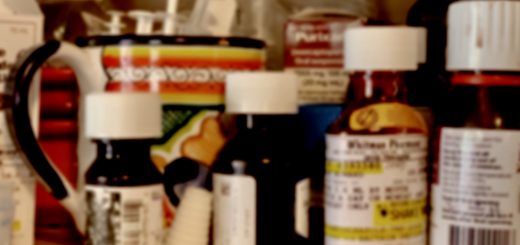
Days like that are so hard! I’m sorry you had to go through that. Glad he is much better! These kids are tough!